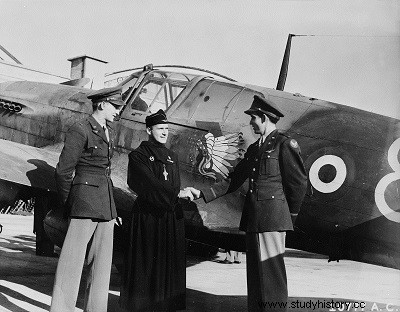
Such were the results of the efforts and sacrifices of the three allies.
Efforts of the French first, who, after having covered the concentration and the approach of the English and the Americans, aided them effectively, on the Dorsale, in a mountain war for which our allies, motorized, were ill-prepared.
Generous efforts of the young American army, still inexperienced, but full of good will and courage.
Efforts of the British, finally, who once again proved their proverbial tenacity. They were admirable, as much by the ardor of their tank crews, who went to the sacrifice wearing gloves, in an irreproachable uniform, as by that of their gunners, who struck down the panzers almost at point-blank range, and by the stubbornness of their infantry. , this old English infantry of which one could say, after Napoleon, "that they were the best in the world, but that there were not quite enough of them".
And these efforts had involved hard sacrifices. The most important are undoubtedly those of the British, since the Anderson army alone had 4,400 killed, 12,000 wounded and 4,500 missing. The French Army of Africa had about 3,000 killed, 8,000 wounded and 4,500 missing, to which must be added the considerable losses suffered, in the last phase, by the Leclerc column and the 1st D.F.L. Finally, the Americans had suffered quite heavy losses.
But we have followed, across mountains, plains and deserts, the ground effort of the Allies, by evoking only their air effort, which it is fair to underline. But the turning point of the campaign, and even of the war in the west, did not only take place on land, but also in the air. We have seen that, initially, the Luftwaffe had been very favored because it had excellent airfields with cemented runways at Tunis and Bizerte, in the immediate vicinity of the battlefield, whereas, the bad terrain of Constantine being made impassable by rain and mud, the Allied planes had to take their flight from the distant airfields of Algiers. But the situation changed at the beginning of 1943, when new land could be developed near Tunisia, and especially when, in April, the Allies were able to dispose of land on the coastal plain south of Tunis.
Admittedly, in this aerial effort, the French wings were modestly represented, our few North African squadrons having been sent back at the start of the campaign to be re-equipped with modern equipment and trained. But, from January 1943, it was for us, on the ground, a real joy to see again tricolor cockades, those of the squadron "La Fayette", which shot down above our heads, in the sky of Pichon, several planes enemies. Finally, the bombing group “Tunisia” began, in this country from which it took its name, the brilliant career it was to accomplish over Eastern and Western Europe.
Tribute should also be paid to the effort of the Royal Navy, for the breakdown of Axis communications in the Mediterranean and in the Strait of Sicily, which it carried out in conjunction with the air force, was really the prime cause of enemy defeat and capitulation.
Alone, alas! the French navy did not participate in this effort, except for a few small units such as the submarine Casabianca, commanded by Commander Lherminier. And the squadron of Alexandria, under the command of Admiral Godfroy, remained neutral and idle in this English port throughout the campaign of Tunisia.
